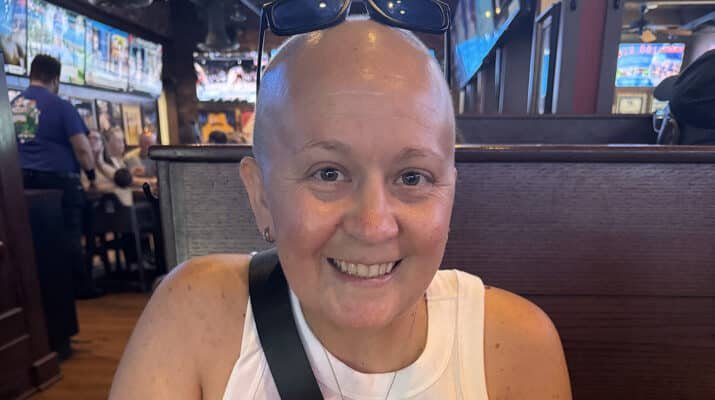By Mary Beth Roach

Stephanie Brown, 39, was diagnosed with breast cancer earlier this year. One month later, she was receiving chemotherapy and even though she said that her cancer was completely responsive to the chemo, she opted for a double mastectomy, fearful that there might be a recurrence.
Throughout her journey, Brown credits the team from the Breast Care Partners with being strong advocates for her, helping set up appointments and even calling her late on a Friday afternoon to give her pathology results so she didn’t have to worry over a weekend.
Brown is one of more than 200 patients that the Breast Care Partners has helped this year alone — steering them through their breast cancer treatments during a time that can be marked by fear, stress and physical issues for the patients.
As of early June, the organization had seen 270 patients, according to Karen Callahan, executive director.
Breast Care Partners is a collaboration begun by the Hematology and Oncology Associates in Syracuse in 2004, along with St. Joseph’s Health Hospital and Crouse Hospital, to provide more organized care for patients that involves medical professionals across a variety of specialties, said Callahan. Making it unique, she said, is that the program has not only the HOA medical and radiation oncologists collaborating but also includes the partnership of two local hospitals.
The team of professionals includes a medical oncologist at HOA that specializes in breast cancer; an HOA radiation oncologist; pathologists from both hospitals; HOA nurse practitioners and physicians’ assistants.
As Callahan explained, nurse navigators and an executive assistant guide the patients through their treatment, making sure that all appropriate appointments are scheduled; determining if patients have any barriers to receiving treatment; or if they need additional services, such as assistance with transportation, physical therapy or a social worker.
The various team members, Callahan said, meet weekly to discuss the cases, look at all the imaging and pathology, discuss similarities with other cases and how those were treated in order “to make sure that they’re coming up with the best plan of care for the patients.”
That the patients know they have advocates in their nurse navigator and executive assistant, who can give them peace of mind, Callahan suggested.
“They know that they have one person that they can go to if they have struggles, that there’s someone looking out for that,” she said.
For more information, visit breastcarepartners.org or its Facebook page.

